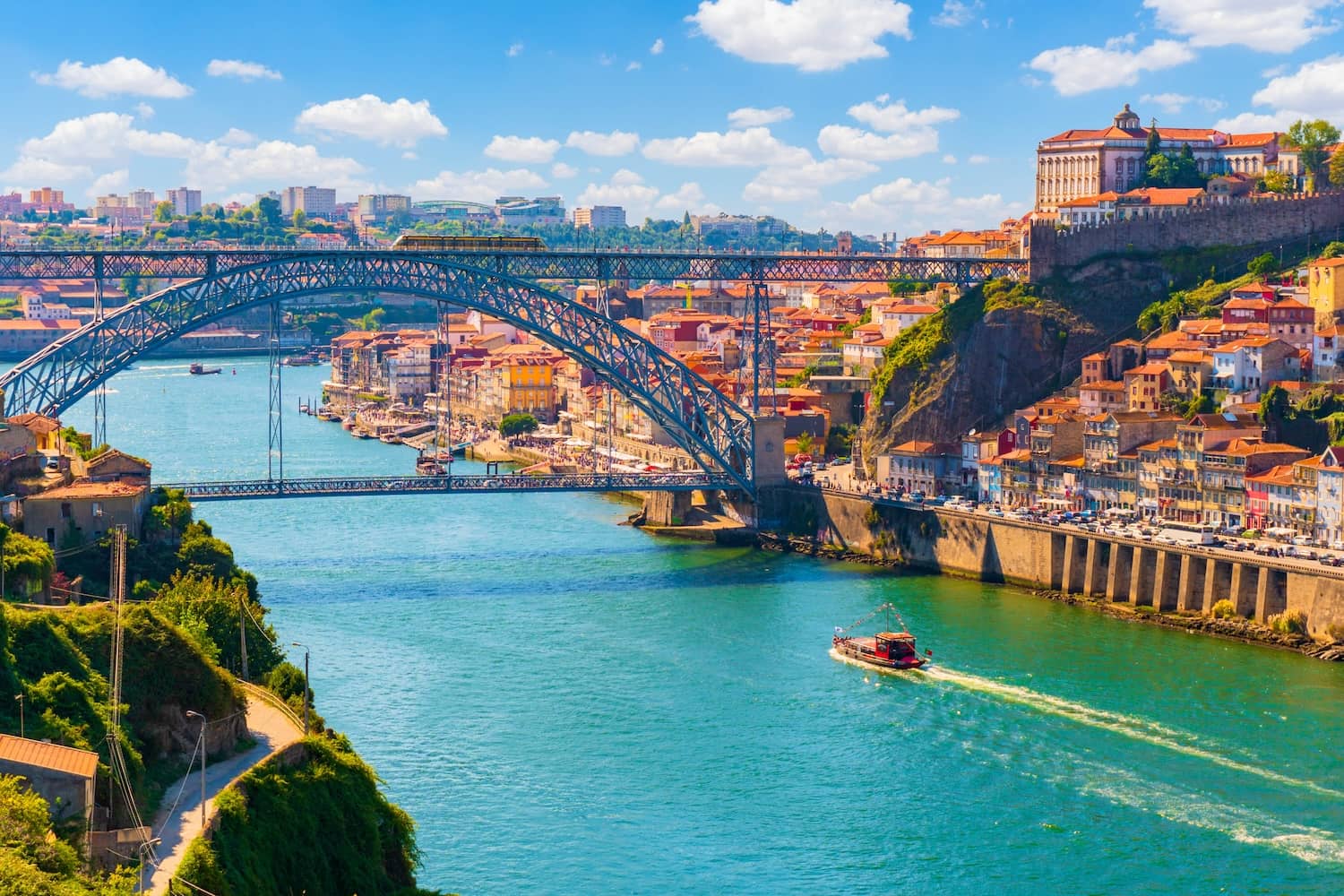How to get from Lisbon to Porto
What You Need To Know About Getting From Lisbon To Porto
Lisbon, the capital city of Portugal, is not only a fantastic choice for spending your vacation because of everything it has to offer, but it’s also a great base from which you can explore nearby places – and that includes the city of Porto, which is very popular with tourists.
Porto is the second largest city in the country behind Lisbon, with a metropolitan area population estimated at more than 1.7 million people. There’s lots to see and do in the city, which shared the European Union’s designation of a European Culture Capital in 2001 with Rotterdam. The award recognized in part the city’s many museums, art and music venues, theaters, and more.
But there’s also several other compelling reasons to visit Porto, including outstanding food and drink options, such as the local delicacy “francesinha,” which is a sandwich that uses cheese, a few different meats and a unique sauce that features beer and various other components.
Alternatively, you could enjoy watching a soccer, cricket or other sports match, or spend time unwinding on one of the city’s sandy beaches, enjoying a swim in the sea under the sun.
Whatever your reason for Porto, the city is just over 190 miles (or roughly 310 kilometers) from Lisbon, so you will not be able to make the trip by foot. Instead, you will need to choose from several options to decide which transportation method you’d like to use for the journey. There are pros and cons with each choice, with differences in their cost, the time taken and more.
Your options for making the trip between Lisbon and Porto
There are a few different ways that you can get to Porto from Lisbon, and these are renting a car, getting a flight, taking a taxi or private transfer, boarding a train or riding on a public bus.
Renting a car
You will enjoy complete privacy and flexibility when renting a car to get to Porto because you can leave from Lisbon whenever you want and drive directly to the city. And the only people in the car will you be you and your travel companions, with your bags safely locked in the vehicle.
The travel time should be roughly 3 hours, putting this in the mid-range of the time taken for the different transportation selections. You may experience a longer drive when traffic is heavy, such as in rush hour, when the experience can be more stressful because there are so many cars. Or you may get to Porto faster at quieter times like early in the morning, when it’s less stressful.
Your most direct route to the city from Lisbon will be driving on the A1 expressway. There are tolls on this route and the total cost is more than €20, so should add that to your travel budget.
But this can often be among the priciest ways to make the journey, and it will likely cost you several hundred Euros, and you will also need to pay to refuel the vehicle. The precise charge will be dependent on the type of car that you select and how long that you plan to rent it, but if you have limited funds to spend then you may want to consider taking a train or bus instead.
Getting a flight
The quickest way to get to Porto is taking a flight from Lisbon’s Humberto Delgado Airport directly to Porto’s Francisco Sá Carneiro Airport. The flight itself should only take 1 hour.
This can also be a relatively affordable way to get to the city, because fares can be under €50 depending on which service you choose. Although it’s more expensive than getting a bus or train to Porto, it’s still significantly cheaper than you’ll pay by taxi or rental car.
There are some downsides to this option, including that you’ll have several hours of waiting at the airport, which can add more time to your trip beyond the 1 hour for the flight. And you will be limited with luggage you want to take, usually one checked bag and one hand luggage item.
Remember also that once your flight lands in Porto, you will still need to take more transportation to get into the city itself, for example by taking a taxi or renting a car. This can add further cost on to the journey even if you don’t pay much for the actual flight ticket.
Taking a taxi or private transfer
By far the most expensive option for the trip to Porto, you will pay for the ride based on distance traveled, whether that’s getting a taxi or a prebooked private transfer service.
And because the city is such a long way from Lisbon, the total fare could easily exceed €325 for a typical four-door taxi and more than €375 if you need a large taxi that seats up to eight people. That can make this option simply not an affordable choice for many travelers.
It’s also within the middle of the transportation choices when it comes to how long it takes, because the drive is usually about three hours. It might be faster if you’re driving at periods with less traffic, like late at night, but may be longer at rush hour and other peak travel times.
But you will have the comfort of knowing that the only people in the car will be you and your vacation companions, any luggage that you want to take will be safely locked in the taxi’s trunk, and you will be taken directly from your location in Lisbon to your destination in Porto.
Boarding a train
Taking the train is not the speediest way to get to Porto because the ride can be between just under 3 hours to almost 3.5 hours, depending on the service that you use. Fares for the total train ride start at about €25, so this is a very affordable option for those on a limited budget.
The route to the city starts from Lisbon’s Santa Apolonia station and they depart roughly each hour or every two hours. After departing the Santa Apolonia station, this train also calls at Lisbon’s central Oriente station, so you could always board there if it’s more convenient.
Your train will not stop in the center of Porto but instead will take you to the Porto Campanhã train station, and from there you can ride a complementary transfer train to the São Bento station that is situated nearer to the city’s old town section that attracts many tourists. This free train picks up between every 5 and 15 minutes and the ride will take less than 5 minutes.
Just remember that the trains could be crowded if you are traveling during the day, particularly during the peak summer seasons when there are more tourists in the region. That means your space for seats and luggage on the trains could be extremely limited at certain times.
Riding on a public bus
Taking the bus is often the slowest of the choices for making the journey between the two cities, and you should plan on it taking at least 3.5 hours but possible even longer. Yet this is also often the cheapest way to get to Porto because fares can begin around €10 or even lower.
The two main bus operators that provide a direct service from Lisbon to Porto are the budget bus provider FlixBus and the intercity bus service known as Rede Expressos. You should research the two companies online before your vacation so that you can compare prices and find the fare and bus pickup time that will work best for taking a ride to Porto.
This travel option shares the same problem as the train, in that seats and space for your bags might be very restricted if you are making the trip during very busy times. The busiest period for riding the bus will be during the summer months and especially around midday.
How to get from Lisbon to Porto FAQ
What are the transportation options for getting between the two cities?
You have several choices for making the journey, and they are renting a car, riding in a private transfer or taxi, getting on a flight, boarding a train or taking a bus.
How long will it usually take to get to Porto from Lisbon?
It depends based on which method of travel you use, with flying being the fastest at just 1 hour between the two cities, and the bus being the slowest at 3.5 hours or possibly more.
What’s the typical cost for making the trip from Lisbon to Porto?
The cheapest way to get to Porto is on the bus as fares can be under €10 depending on the service, and a taxi or private transfer is the most expensive at easily more than €300.

